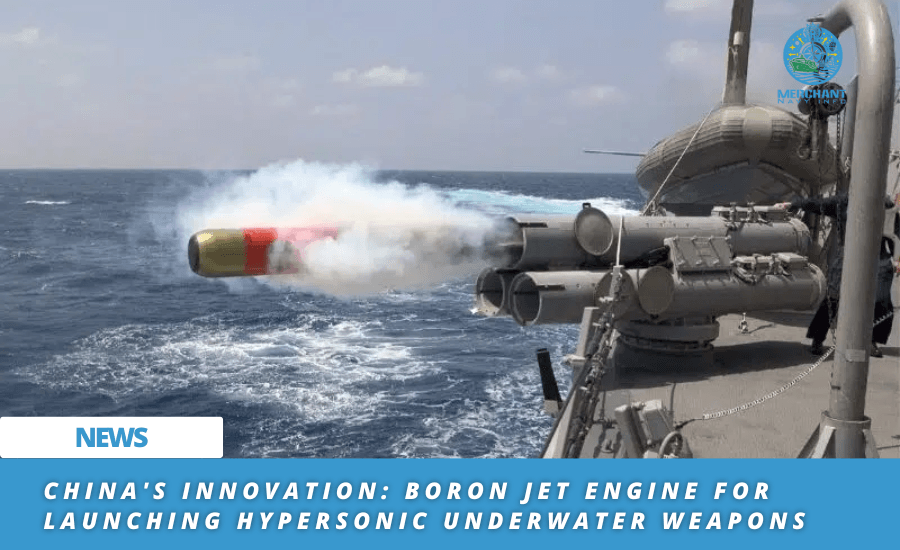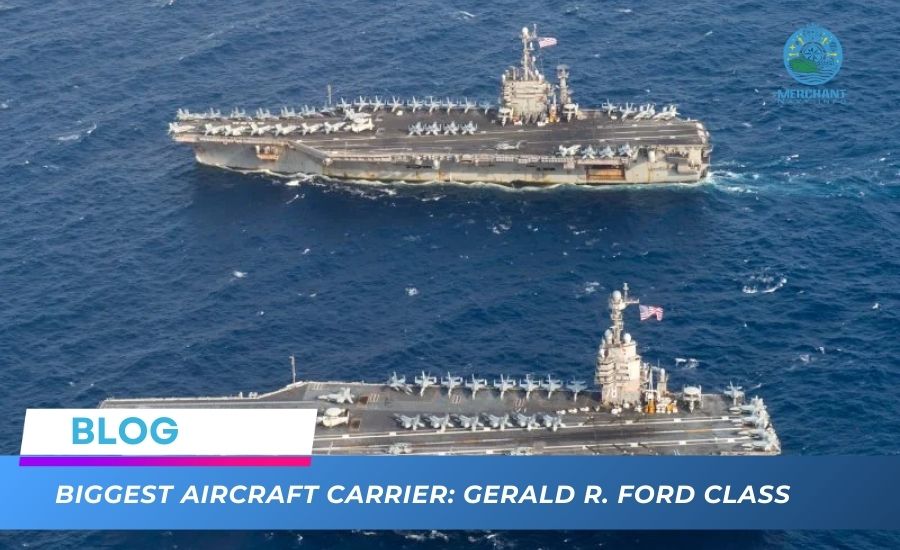
What Is the World’s Largest Aircraft Carrier?
The world’s largest aircraft carriers (Gerald R Ford) are more than just ships equipped for war. In the face of endless regional conflicts, aircraft carriers symbolize the prestige and strength of navies worldwide.
These new “battleships” are among the most important war materials for all countries. Since their birth, they have had a huge impact on the defense systems of many countries.
Larger aircraft carriers are floating air bases equipped with full-length flight platforms capable of carrying, arming, deploying, and recovering aircraft. As flagships of coastal naval fleets, these ships can carry many aircraft, including fighters, attack aircraft, and helicopters, with effective weapon systems.
Most major powers operate or build technologically advanced aircraft carriers to protect their maritime rights and interests. There are 41 active aircraft carriers in the navies of 13 countries worldwide.
While the U.S. Navy has the largest aircraft carriers (11), the Chinese and British navies have two. India, France, Russia, and Italy currently have one each (although India is ready to launch an indigenous aircraft carrier in 2022).
In addition, countries such as Japan (4), France (3), Australia (2), Egypt (2), Brazil (1), South Korea (1) and Thailand (1) have a total of 14 small aircraft carriers that only carry helicopters.
Gerald R. Ford-class aircraft carrier (CVN-78)
The USS Gerald R. Ford is the biggest aircraft carrier in the world, that was commissioned into the United States Navy in May 2017 and entered service in July 2017.
- Manufacturer: Huntington Ingalls Industries Newport News Shipyard
- Service/Operator: U.S. Navy
- Weapons: Advanced Sea Sparrow Missile, Rolling Chassis Missile, Hazard Warning System
- Propulsion: Two nuclear reactors, four shafts.
- Speed: More than 30 knots
- Crew: 4539 (ships, fleet and staff).
- Aircraft: 75
- Project Type: CVN
- Manufacturer: NAS HII
- Length: 333 AD
- Beam: 40.8 meters
The Gerald R. Ford-class aircraft carrier is the future aircraft carrier class that will replace the Enterprise-class and Nimitz-class aircraft carriers of the U.S. Navy. The aircraft carrier USS Gerald R. Ford (CVN 78) was laid down at Newport News Shipyard on September 10, 2008, and is scheduled for delivery in 2016.
The class will be Gerald R. Ford’s premier forward asset in crisis response and a decisive early strike force in major combat operations. Gerald R. Ford’s core capabilities are forward presence, deterrence, sea control, force projection, maritime security, and humanitarian assistance.
The class enhances the warfighting capabilities of our Sailors, improves their quality of life, and reduces the overall cost of ownership.
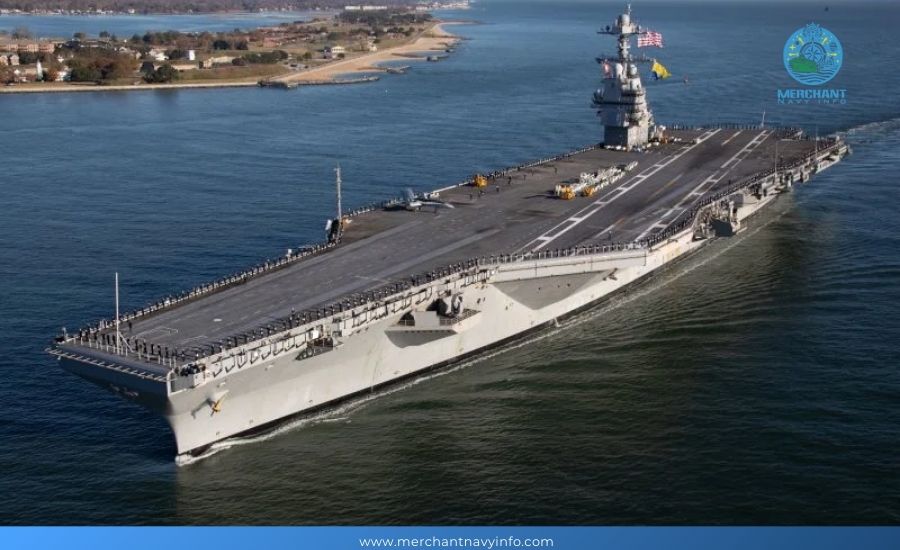
The USS Gerald R. Ford is the world’s largest aircraft carrier. The first of the class, USS Gerald R. Ford, was laid down in May 2017, and the remaining four announced ships are under construction.
How tall is the Gerald R. Ford? The currently serving USS Ford is 337 meters long and 78 meters wide. It has a total displacement of 100,000 tons, a flight deck of 78 meters long, an electromagnetic aircraft catapult system, and advanced stall equipment.
The USS Gerald R. Ford has over 75 aircraft and can accommodate 4,539 people. It is fueled by two nuclear reactors equipped with RIM-162 Evolved Sea Sparrow Missiles, Airframe Missiles (RAMS), and Phalanx Close-in Weapon System (CIWS).
Also read: What Is a Supramax Vessel?
Expansion
The Gerald R. Ford class is a fleet of nuclear-powered aircraft carriers (CVNs) being developed for the United States Navy by Newport News (NNS) shipbuilder Huntington Ingalls Industries (HII) under the CVN-21 aircraft carrier program.
In January 2007, the U.S. Navy announced that the new ship class would be the Gerald R. Ford.
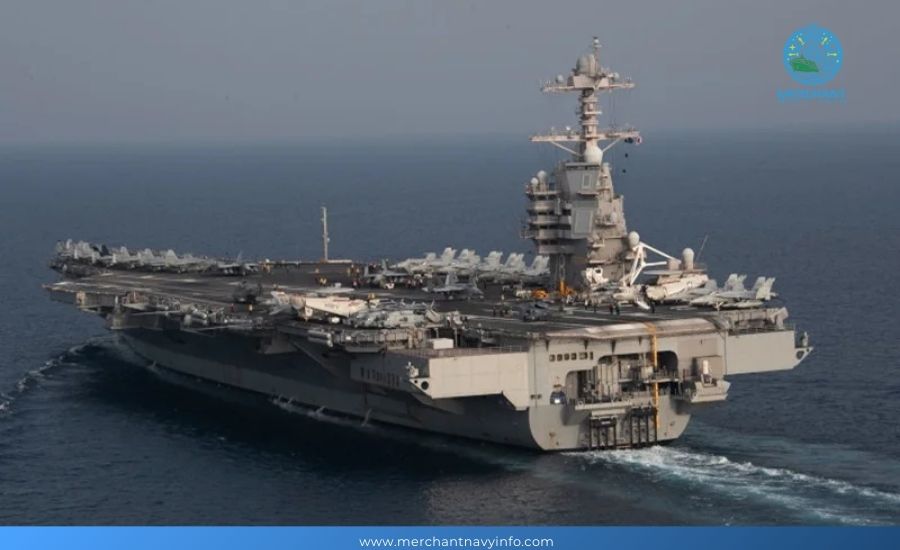
The first four ships of the Gerald R. Ford class are the Gerald R. Ford aircraft carriers. Ford (CVN-78), USS John F. Kennedy (CVN-79), USS Enterprise (CVN-80), and USS Doris Miller (CVN-81).
USS Gerald R. Ford was delivered to the U.S. Navy in May 2017 and commissioned in July 2017. In April 2023, the carrier completed several weeks of final integrated training unit training and received certification as a U.S. deployable warship.
The ship replaced the USS Enterprise (CVN 65), which was retired in 2017 after more than 50 years of active service.
Design details of the Gerald R. Ford
The Gerald R. Ford displaces approximately 100,000 tons. The Ford class is larger than its predecessor, the Nimitz class, but can accommodate 500 to 900 fewer sailors.
The Ford-class carriers will feature 23 new or upgraded systems compared to the Nimitz-class carriers.
The Gerald R. Ford is 333 meters long, 40.8 meters wide, and has a flight deck width of 78 meters.
Manpower reduction is one of the key performance criteria added to the original four standards outlined in the CVN 21 program operational requirements document 2000.
It is estimated that the new carrier technology will reduce maintenance requirements by 30% and further reduce crew workload through higher levels of automation.
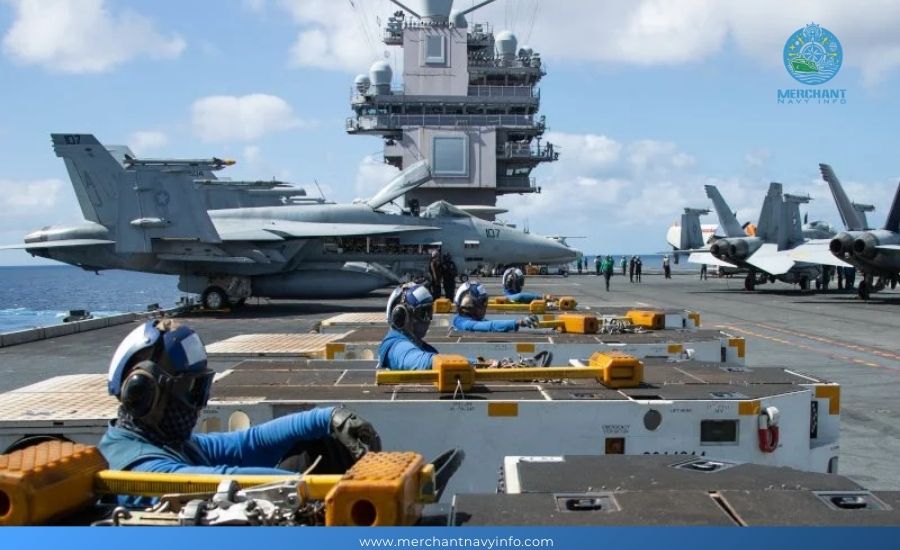
Other key differences in combat performance compared to the Nimitz class include:
- 160 sorties per day (compared to 140 per day).
- Weight and stability allowances over the ship’s 50-year service life.
- An approximately 150% increase in power generation and distribution to support the ship’s advanced technology systems.
Another key performance requirement is interoperability.
Development details of the Gerald R. Ford Class Ships
The first steel was cut for the USS Gerald R. Ford in August 2005, and the keel was laid in November 2009.
In October 2013, the carrier was equipped with four 30-ton bronze propellers. The ship was launched and made its first flight in November 2013.
The carrier completed anchoring tests in June 2014, and the U.S. Navy conducted electromagnetic catapult launch system (EMALS) tests on the carrier in May 2015. The ship returned to the NYSE in July 2018 for post-delivery work.
USS John F. Kennedy began construction in February 2011, and the keel was laid in July 2015.
It was christened and launched in December 2019.
Also read: US Sends Aircraft Carriers Amid Iran’s Threat To Israel
In June 2023, NNS received a contract amendment totaling $393.3 million to modify the USS John F. Kennedy delivery strategy. Kennedy. Under the revised plan, the carrier will be delivered to the U.S. Navy in July 2025.
The first steel for the USS Enterprise was cut in August 2017. The ship was built using CVN 65 steel, which was retired in April 2018.
It is the ninth ship to bear the Enterprise name and will replace USS Dwight D. Eisenhower, which is expected to be retired in 2029.
The keel-laying ceremony for the USS Enterprise took place at the U.S. Naval Shipyard in August 2022, and delivery is expected in September 2029.
The first steel for the USS Doris Miller was cut in August 2021. The keel was laid in 2026; delivery is expected in February 2032.
The hull of the Gerald R. Ford-class aircraft carrier
Since the 1960s, all U.S. Navy aircraft carriers have been built at NNS. The company has expanded its design and shipbuilding facilities, adding a new plate shop and burner, a new 5,000-ton plate press, covered assembly facilities, and a new 1,050-ton crane.
NNS simulates production processes using various computer-aided design tools for CVN 21, including the CATIA software suite and the Cave virtual environment package.
The hull design is similar to the current Nimitz-class carriers, with the same number of decks. The island is smaller and located farther from the stern.
The island has a composite mast that houses a planar array radar, a volume search radar operating in the S-band, and a multifunction radar operating in the X-band.
Also read: The Black Sea: Why is it so important?
It also has a combined precision approach and landing system at the rear that relies on local differential GPS rather than radar.
Aircraft carriers traditionally carry the captain and 70 members of the battle group. The flag bridge, originally located inside the carrier island, was moved to the lower deck to reduce the island’s size.
The ship’s interior configuration and flight deck design have undergone dramatic changes. The lower deck includes a flexible and rapidly reconfigurable layout that allows for different layouts and the installation of new equipment in the command, planning, and administration areas.
Establishing weight and stability margins will accommodate the additional weight of new systems installed over the ship’s 50-year service life.
Removing one aircraft elevator and reducing the number of hangars from three to two helped reduce the ship’s weight.
Sensors
In October 2008, Raytheon was contracted to provide a version of the Dual-Band Radar (DBR) developed for the Zumwalt-class destroyers to be installed on the USS Gerald R. Ford. The DBR combines X-band and S-band phased arrays.
Payment
Northrop Grumman has developed an advanced nuclear propulsion system with two reactors, four shafts, and a regional power distribution system for aircraft carriers.
Performance of the Gerald R. Ford-class aircraft carrier
The carrier can carry up to 90 aircraft, including F-35 Joint Strike Fighters, F/A-18E/F Super Hornets, E-2D Advanced Hawkeyes, EA-18G Growler electronic attack aircraft, and MH-15 helicopters, as well as drones and combat vehicles.
The requirement for a higher sortie rate of 160 sorties per day, increasing to a maximum of 220 sorties per day during crises and intense air combat, led to changes in the flight deck design.
The flight deck has a smaller, repositioned island with three elevators on the edge instead of four. The expansion of the flight deck also added aircraft parking spaces and aircraft service stations located near 18 refueling and rearmament stations.
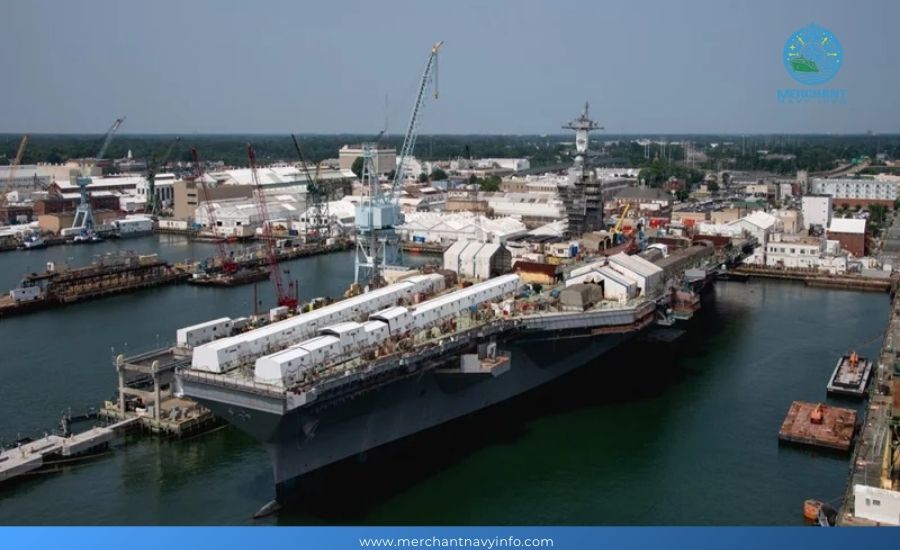
The carriers are equipped with the General Atomics Systems (GA-EMS) Electromagnetic Aircraft Launch System (EMALS), which uses a linear electromagnetic accelerator motor. The EMALS system replaces the C-13 steam catapults traditionally used to launch aircraft from ships, expanding the range of future aircraft launches, whether manned or unmanned.
EMALS technology has the potential advantage of precisely controlling aircraft acceleration, which can reduce stress levels for aircraft and pilots, provide slower launch speeds for unmanned aircraft, and allow for longer on-deck wind speeds required for launch sequences.
The ships are also equipped with Advanced Arrest Gear (AAG). Electromagnetic actuators control the synthetic sling to reduce the cable’s maximum tension and load on the hook and fuselage.
Weapons on the Gerald R. Ford-class aircraft carriers
The Gerald R. Ford-class aircraft carriers can be armed with Raytheon’s advanced Sea Sparrow missile, which can defend against high-speed, maneuvering anti-ship missiles.
The Close-in Weapon System is a Rolling Airframe Missile by Raytheon and Ramses.
Loading aircraft weapons
The weapons flow of the aircraft stations on the flight deck has been upgraded to accommodate the higher sortie rate.
The ship carries missiles and shells for fighters, bombs and air-to-surface missiles for attack aircraft, and torpedoes and depth charges for anti-submarine aircraft.
The weapons elevators transport the weapon systems from the warehouse to the weapons loading and assembly area on the 02-level deck (below the flight deck). In contrast, fast weapons elevators are installed between the loading and assembly area and the flight deck.
Also read: 15 Best Aircraft Carriers in the World
The U.S. Navy has proposed requiring CVN 21 aircraft carriers to increase their power generation capacity by at least 150% over the Nimitz-class aircraft carriers.
The increased power capacity is needed for the four electromagnetic launchers and for future systems, such as directed energy weapons that may become possible during the carrier’s 50-year life.
Contractors Involved – Timeline
The U.S. Department of Defense awarded NNS a $107.6 million contract in July 2003 and a $1.39 billion contract in May 2004. The department also awarded $559 million to prepare for the construction of the aircraft carrier and continue the ship’s propulsion system design program.
In September 2008, NNS was awarded a $5.1 billion contract for the detailed design and construction of the USS Gerald R. Ford aircraft carrier.
NNS was awarded a contract to support further repair work on the lead ship. The contract covers planning to implement repair requirements and modify the ship’s planned additional availability.
In November 2006, Northrop Grumman was awarded the design and planning contract for the second aircraft carrier, USS John F. Kennedy.
Northrop Grumman selected Federal Equipment Company and Oldenburg Lakeshore to design the ship’s advanced weapons elevator.
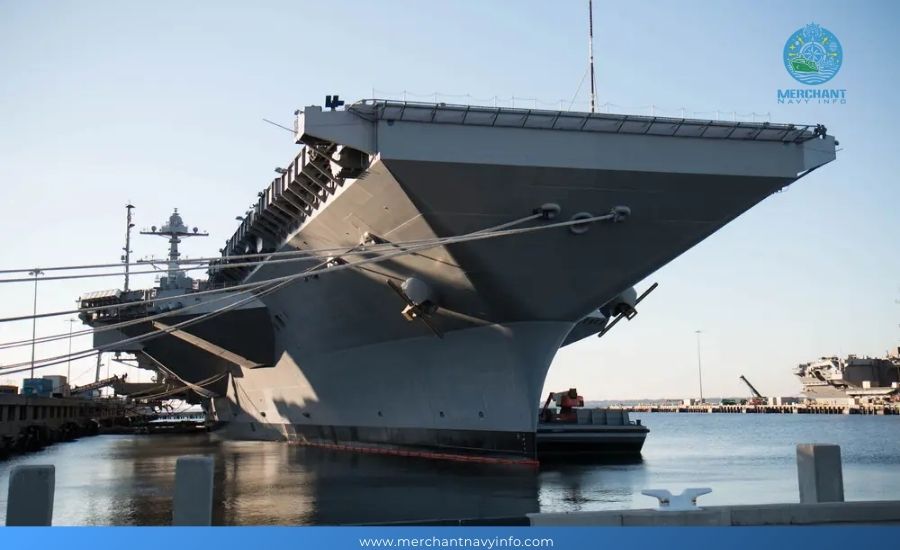
NNS was awarded a $407 million contract extension for preparation work on USS John F. Kennedy in March 2013 and a $1.29 billion extension in March 2014. In June 2015, it was awarded a $3.35 billion contract for detailed design and construction of the ship.
In May 2016, NNS was awarded a $152 million contract for advanced planning engineering, design, and long-term material procurement for the third ship in its class, the USS Enterprise.
A $25.5 million modification contract for advanced aircraft manufacturing was awarded in February 2017.
In January 2019, NNS was awarded a $15.2 billion modification contract for the detailed design and construction of the USS Enterprise and USS Doris Miller aircraft carriers.
Also read: What Is Life Raft Drills? Essential Safety Practices
In February 2019, Fairbanks Morse, a supplier of naval equipment, was awarded a contract to supply emergency diesel generator sets for the aircraft carriers USS Enterprise and USS Doris Miller.
Timken, a bearings and power transmission product manufacturer, announced in February 2021 that its Philadelphia Gear division was awarded a more than $100 million contract from HII-NNS.
The contract includes the supply of main reduction gears for the aircraft carrier USS Doris Miller.
In June 2023, GA-EMS received a contract modification from Naval Air Systems Command to supply EMALS and AAG for the aircraft carrier USS Doris Miller.
In September 2024, QinetiQ U.S., a defense and national security company, was awarded a GA-EMS contract to provide hardware and control software for EMALS and AAG to be installed on USS Doris Miller.

